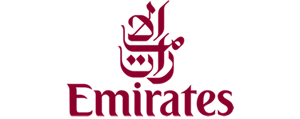 Emirates Expands Premium Economy to Bangkok, Elevating Comfort for Africa-Asia Connections
Emirates Expands Premium Economy to Bangkok, Elevating Comfort for Africa-Asia Connections
Emirates is redefining the in-flight experience once again, unveiling its Premium Economy Cabin on the high-traffic Dubai-Bangkok route (EK376/377) with the deployment of its newly retrofitted A380 aircraft. This move is particularly significant for African travel professionals as Emirates’ extensive network offers crucial connectivity between sub-Saharan Africa, the Middle East, and Asia—regions that are increasingly intertwined for both business and leisure travel.
With the A380’s arrival in Bangkok, Emirates now delivers its acclaimed Premium Economy experience to over 70 cities worldwide. This latest addition comes as a strategic enhancement, allowing passengers transiting through Dubai from various African hubs to seamlessly connect to one of Asia’s most dynamic destinations in elevated comfort. For African operators, this enhancement represents an attractive new selling point for clients seeking a balance between affordability and luxury, particularly on long-haul journeys where comfort and service matter most.
The new Premium Economy cabin is thoughtfully positioned at the front of the main deck, comprising 56 seats in a 2-4-2 configuration. It’s intentionally designed to bridge the gap between Economy and Business Class—an emerging sweet spot for travelers who desire more space and exclusivity without the premium price tag of a business fare. This growing market segment is particularly relevant for Africa’s evolving travel landscape, where clients are increasingly seeking value-added experiences that don’t compromise on quality.
Each seat in Emirates’ Premium Economy comes with a generous 40-inch pitch, 8-inch recline, adjustable headrests, and full leg and footrests. The cabin’s design exudes a sense of understated luxury, with seats finished in anti-stain cream leather and complemented by fold-out woodgrain tables—perfect for dining or productivity on the go. These touches are not just about aesthetics but are geared towards enhancing the overall journey, especially for travelers making the long trek between Africa and Asia.
Entertainment and technology receive equal attention. Passengers are treated to a 13.3-inch HD screen for in-flight entertainment, as well as Bluetooth pairing capabilities for personal devices. Such amenities are increasingly expected among Africa’s discerning outbound travelers, many of whom now prioritize digital convenience and high-quality content when choosing their preferred airline.
One of the highlights of the Premium Economy experience is the meticulously curated dining service. Menus are crafted to reflect regional flavors and are served on Royal Doulton China, raising the in-flight dining standard well above what’s typically found in traditional premium economy cabins. The expanded beverage selection—including vintage wines—ensures that passengers have access to a truly comprehensive inflight offering throughout their journey. This focus on gastronomy aligns with the expectations of African travelers who increasingly view meal quality as a key differentiator on long-haul flights.
The introduction of this cabin on the Dubai-Bangkok route is part of Emirates’ ambitious retrofit programme, renowned as one of the industry’s largest. The airline is systematically upgrading 219 A380s and Boeing 777s, with a vision to deliver a consistent premium experience across its entire network. By the end of 2025, Emirates aims to offer nearly 2 million Premium Economy seats annually—a figure set to double by 2026. This scale of rollout ensures that African travelers, whether flying to Asia, Europe, or the Americas, can expect the same level of enhanced comfort and service no matter their destination.
Bangkok now joins a growing list of Emirates’ Premium Economy destinations, which already includes major gateways such as New York, Lyon, and London. For African operators, this means greater flexibility in constructing itineraries that combine comfort with connectivity, especially for clients who demand a higher standard of travel but are mindful of their budgets. The ability to offer an end-to-end Premium Economy experience—starting from various African cities, transiting via Dubai, and continuing to Asia or Europe—represents a significant upgrade in value proposition for outbound travel from the continent.
Looking ahead, Emirates’ strategy is poised to have a noteworthy impact on the African market. As the airline increases its Premium Economy capacity, African travel businesses have an expanded toolkit to meet rising customer expectations. The product’s positioning between Economy and Business Class is likely to appeal to a wide spectrum of travelers: from business professionals seeking comfort without full corporate expense, to families and leisure travelers desiring a touch of luxury on special journeys.
Emirates’ ongoing investments in cabin upgrades are also a signal to the broader industry about the changing dynamics of air travel. As global demand rebounds and African economies become more connected with Asia and the Middle East, the ability to offer enhanced inflight experiences will become a key differentiator for market leaders. For those in the African travel sector, staying attuned to these innovations—and communicating their value to clients—will be essential to capturing new market share and building loyalty in an increasingly competitive environment.
As Premium Economy becomes a global standard, Emirates’ commitment to expanding this product across its network creates new opportunities for African travel businesses. The Dubai-Bangkok route, now equipped with this elevated cabin, stands as a testament to the airline’s vision of making comfort, convenience, and connectivity accessible to a wider audience. For Africa’s travel professionals, it’s time to rethink how such offerings can be incorporated into client recommendations, group tours, and corporate packages—ensuring the continent remains at the forefront of evolving travel trends and expectations.
